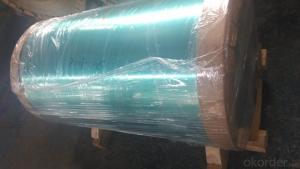Aluminum foil, that shiny, thin, and versatile piece of material, has been a staple in kitchens around the world for decades. From wrapping up leftovers to creating unique cooking techniques, its uses are as diverse as the cultures that employ it. Let’s dive into the culinary adventures that this humble material takes us on, and explore how it has become an integral part of cooking techniques across the globe.
The Art of Wrapping and Cooking
In many households, aluminum foil is synonymous with convenience. It’s the go-to for wrapping up half-eaten pizza slices or covering a baking dish. But did you know that it’s also a canvas for culinary creativity? Chefs and home cooks alike have discovered that foil can be used to wrap, encase, and steam food, locking in flavors and creating delicious, moist results.
A Global Tour of Foil Cooking
Asian Delights
In Asian cuisine, aluminum foil is often used to wrap and grill meats and seafood. The technique allows the natural juices to be retained, resulting in tender and flavorful dishes. Think of the succulent Korean galbi or the aromatic Thai basil chicken – both are often cooked foil-wrapped over hot coals or in a grill.
European Elegance
In Europe, foil is used to add an elegant touch to dishes. En papillote, a French cooking method, involves sealing food in a foil packet with aromatics like garlic, herbs, and wine. This method not only preserves the flavors but also creates a visually appealing presentation when the packet is opened at the table.
Latin American Heat
Down in Latin America, foil is embraced for its ability to handle high heat. It’s common to see foil-wrapped chiles rellenos, where the spicy peppers are stuffed, wrapped, and then roasted to perfection. The foil acts as a barrier, ensuring even cooking and preventing the filling from falling out.
African Flavors
In African cooking, aluminum foil is used in a similar manner, often to wrap and grill over open fires. The foil helps to concentrate the flavors of marinated meats and vegetables, giving dishes like South African bobotie or Nigerian suya a smoky, intense profile.
Beyond the Basics: Advanced Techniques
While the basic use of foil is well-known, there are more advanced techniques that take foil cooking to the next level.
Sous Vide with Foil
Sous vide, a method of cooking in which food is vacuum-sealed in a bag and cooked in water, can also be achieved using aluminum foil. This technique ensures that the food is cooked evenly and retains its moisture, resulting in a restaurant-quality dish at home.
Foil as a Baking Tool
Aluminum foil can also be used as a tool for baking. It can line baking sheets, help form the shape of bread or pastries, and even be used to create makeshift molds for unique desserts.
The Science of Foil Cooking
Understanding the science behind foil cooking can help you get the best results. The foil’s ability to conduct heat evenly and its non-stick surface make it an excellent medium for cooking a variety of dishes.
The Environmental Impact
As we celebrate the versatility of aluminum foil, it’s important to consider its environmental impact. While it’s recyclable, improper disposal can lead to waste. Efforts to reduce, reuse, and recycle foil are essential for maintaining a sustainable kitchen practice.
The Future of Foil in Cooking
Looking ahead, the role of aluminum foil in cooking is likely to evolve. With advancements in cooking techniques and a growing awareness of environmental issues, we may see new ways to utilize foil that are both innovative and eco-friendly.
Embracing the Foil: A Personal Touch
For many, using aluminum foil in cooking is more than just a practical choice; it’s a personal one. It’s about embracing the simplicity and creativity that comes with this material. Whether you’re a professional chef or an amateur cook, aluminum foil offers endless possibilities for culinary exploration.
So, the next time you reach for that roll of aluminum foil, remember the global journey it takes you on, the flavors it helps to preserve, and the creativity it inspires. It’s not just a piece of kitchen equipment; it’s a passport to culinary adventures around the world.

